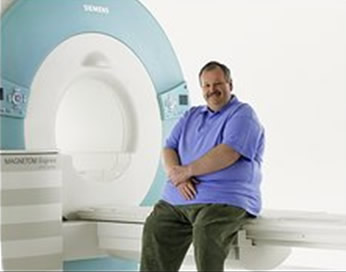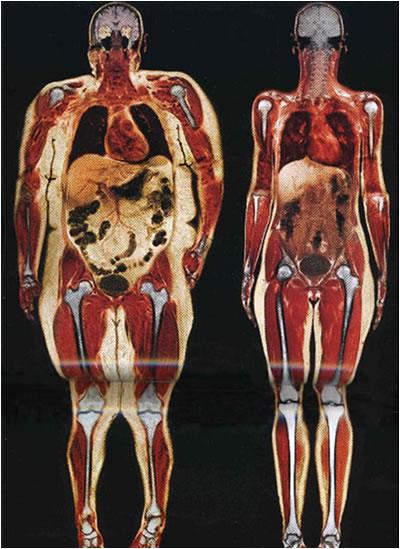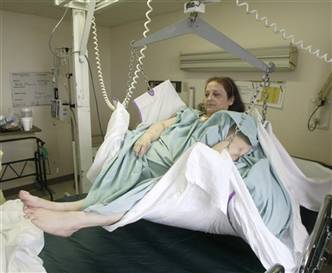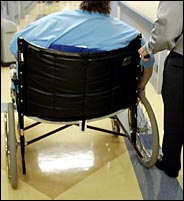Health Effects of Morbid Obesity
Jump to navigation
Jump to search
Obese patients present a number of challenges, which generally fall into one of three areas: size, mobility, and image quality. Many of these obstacles fall upon the radiographer.
Issues that need to be considered
Other issues to consider include increased demand on sonographers due to increased arm abduction and transducer pressure. (always remember to protect your body and dont put yourself at risk to obtain images.)
When scanning the upper abdo, the liver will be commonly have fatty infiltration which limits the ability to penetrate the liver and lesions can be missed.
Morbidly Obese Patients | Other pages of interest |
| Imaging Depatments Medical imaging departments are facing the impact of the morbidly obese. The increasing prevalence of obesity in the western world with the associated health problems, coupled with the growing popularity of bariatric surgery have led to increased imaging of these patients. The morbidly obese segment of society puts a considerable strain on medical imaging departments. Current imaging technology has limited ability to accommodate these patients and provide the desired quality of images required for diagnosis, transport and movement of these patients is exceptionally difficult and departmental patient throughput is significantly hampered creating longer waiting times and inefficient use of expensive equipment. | |
| Effects The prevalence of obesity is increasing in Australia and around the world. According to the Centers for Disease Control and Prevention, approximately 20% of Australian adults are morbidly obese and over 30% of American adults are morbidly obese with the number rising each year. It has been recognised by the World Health Organsiation that the effects of being morbidly obese are | 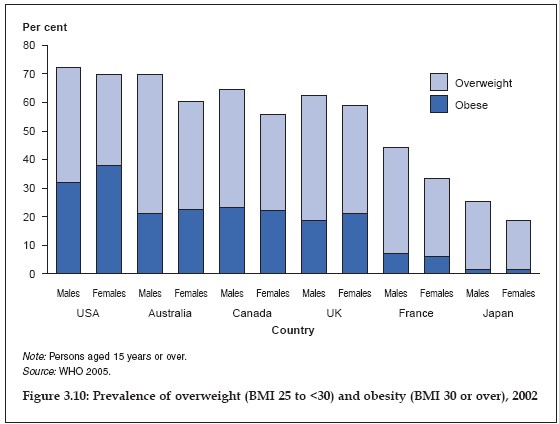 <a class="external" href="http://www.aph.gov.au/library/intguide/SP/obesity.htm" rel="nofollow" target="_blank">http://www.aph.gov.au/library/intguide/SP/obesity.htm</a> |
| BMI BMI, or body mass index, is a simple and widely used method for estimating body fat. BMI was developed by the Belgian statistician and anthropometrist Adolphe Quetelet. It is a height to weight ratio calculated by dividing the subject's weight by the square of his/her height, typically expressed by
Where kg is the subject's weight in kilograms and m is the subject's height in metres. Commonly
A BMI of 35.0 or higher in the presence of at least one other significant comorbidity is also classified by some bodies as morbid obesity |
Obese patients present a number of challenges, which generally fall into one of three areas: size, mobility, and image quality. Many of these obstacles fall upon the radiographer.
Issues that need to be considered
- larger beds
- hovermats for sliding
- Larger wheel chairs
- Lifting devices
- Use of Grids
Ultrasound
Ultrasound is extremely limited with obesity, sound wave attenuation from adipose tissue, requires a lower scanning frequency which reduces image resolution. With pregnancy (obstetric ultrasound) the accuacy in detection of fetal abnormalities is reduced.Other issues to consider include increased demand on sonographers due to increased arm abduction and transducer pressure. (always remember to protect your body and dont put yourself at risk to obtain images.)
When scanning the upper abdo, the liver will be commonly have fatty infiltration which limits the ability to penetrate the liver and lesions can be missed.
<embed height="350" src="http://widget.wetpaintserv.us/wiki/wikiradiography/page/Effects+of+Being+Morbidly+Obese/widget/youtubevideo/2129857606" type="application/x-shockwave-flash" width="425" wmode="transparent"/>

